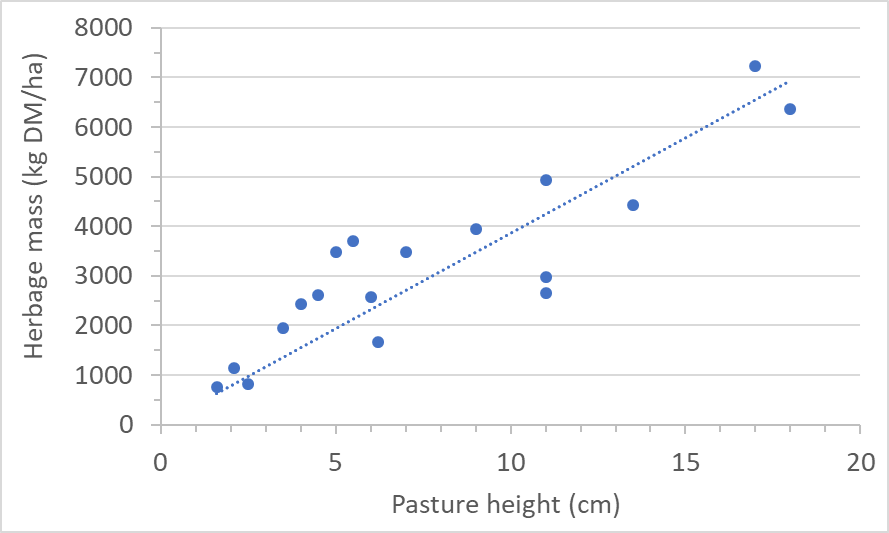Media release: Drought Resilient Pasture Landscapes
31 July 2023
How accurate are our visual estimates of herbage mass? Are you worried about how much feed you have available, as conditions dry?
Uncertainty about the accuracy of estimating pasture availability (also called herbage mass) can undermine confidence in the feed budgeting process, and that’s not warranted, says University of New England pasture coach Jaimi-lee Edwards.
“It’s normal to feel uncertain about estimating herbage mass in a paddock, especially when there are higher tussocks interspersed with shorter pasture,” Jaimi-lee says.
“But using pasture height and an estimate of pasture density is a proven method for ensuring those estimates are good enough to be very useful for feed budgeting purposes.”
At the last round of coaching sessions held as part of the Australian Government’s Future Drought Fund’s Drought Resilient Soils and Landscapes Grants Program, pasture was cut to ground level in 20 paddocks across the Northern Tablelands using a 50cm square quadrat and after measuring pasture height.
On average there was about 350kg dry matter/ha for every centimetre of pasture height.
“An average pasture height of 6cm would equate to 2,100kg dry matter/ha of herbage mass,” Jaimi-lee explains.
“When measuring pasture height, we don’t measure to the very tops of the stems but rather to the average height of the leaves (green or dead).”
Members of the coaching groups enter these estimates of herbage mass into their Ag360 accounts (you can create a free account at www.ag360.com.au), and the models in Ag360 then use these estimates, with information about pasture quality, livestock and climate to provide forecasts of herbage mass during the coming six months.
“These pasture forecasts generated by Ag360 are a complete feed budgeting service done for you.”
For more information on the Drought Resilient Pasture Landscapes contact and upcoming workshops, please visit www.glenrac.org.au . This project received funding from the Australian Government’s Future Drought Fund.
